Sometimes the biggest threat to a small business’ third-party risk management strategy is a vendor that either has access to its network or requires sensitive information to perform transactions. Even if the small business implements the right cybersecurity training, keeps all of their devices up to date, and uses the best security services, it has no control over how the third-party secures its data. However, this does not mean that small businesses cannot do anything to defend their data, and every small business should take great care when working with third parties to ensure their data is in safe hands. Here we want to talk about a few strategies your business can take to improve third-party risk management!
Vetting the Third-Party

The first step to better third-party risk management is to carefully vet the services employees are required to sign up for. While some services are essential to business operations like the Microsoft suite, Google services, or programs necessary for creating products, any third-party your business gives information can put it at risk. This means employees should be taught to exercise caution when signing up for new services with their work email, and any service that would require a large number of accounts should be assessed for its current data handling practices and its history with preventing or controlling data breaches.
Monitoring Third-Party Services Used

Every small business should keep track of the third-party services they use and what information each third-party service has access to. This way, if something were to go wrong with the data security at one of those companies, your small business can quickly change credentials related to that service and assess the risk associated with the data that company had access to. Speed is crucial when a third-party data breach occurs, and by keeping a close eye on your business’ connections, stolen credentials can be invalidated quickly, and plans can be made to alter or re-secure leaked data.
Shutting Down Old Connections

Another benefit of keeping track of used third parties is that it becomes easier to shut down unused accounts and invalidate credentials for sites and services that no longer provide value to the company. Some services let you delete old accounts, but you should still keep a record of the information and credentials associated with that service. Many cyberattacks begin because a company forgets to shutdown an old employee’s account for a service, so it is crucial to remember when planning third-party risk management that these accounts can be an attack vector and should be monitored if they can’t be shutdown.
Summary
When assessing your third-party risk management strategy, It is important to remember that even with these best practices in place, it will always be possible for your data to get caught up in a third-party data breach. However, if your business chooses its third-party vendors carefully, monitors each one used, and manages those connections well, then it will be in a better position to prevent stolen information from becoming an attack vector. These third-party risk management best practices will also help your business work with a local IT consultant should sensitive information get into the wrong hands and additional advice is needed to keep your business running safely and securely.





